
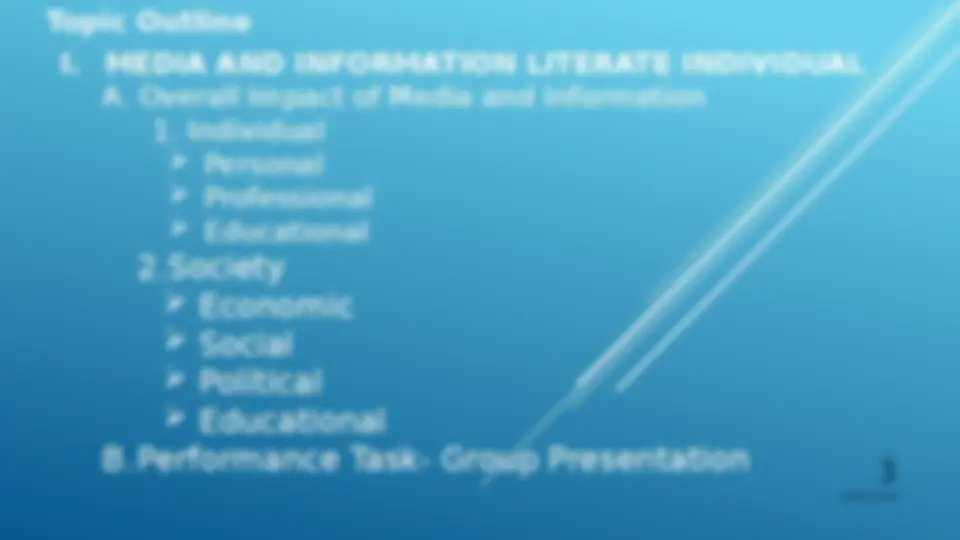
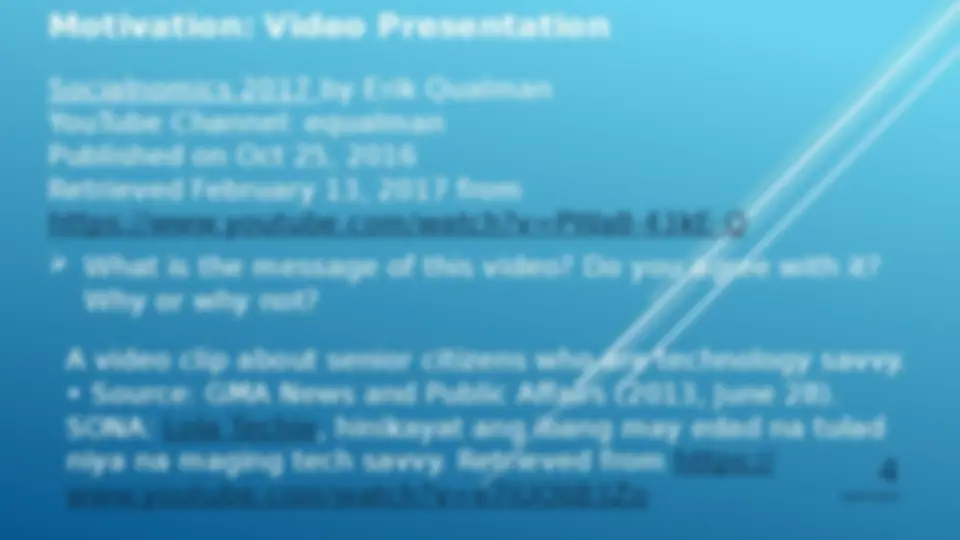
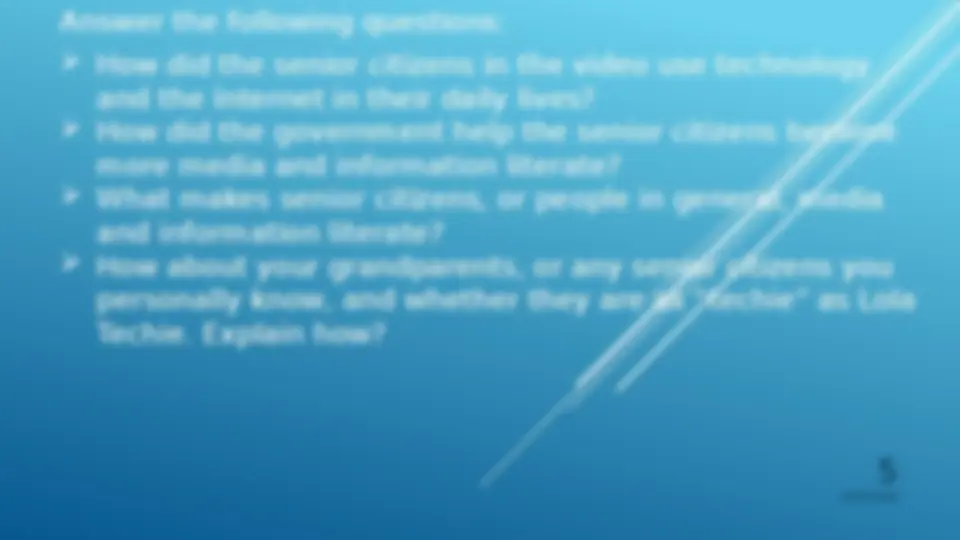
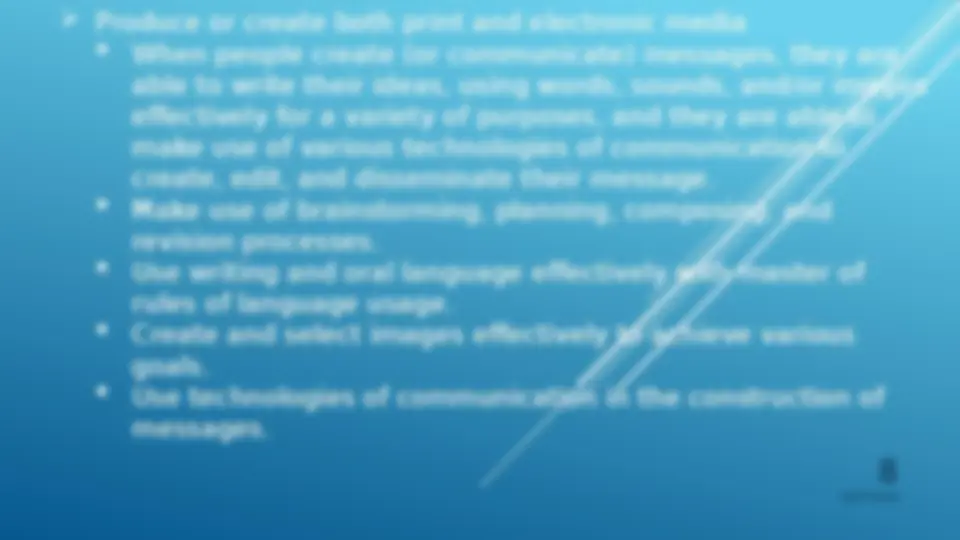
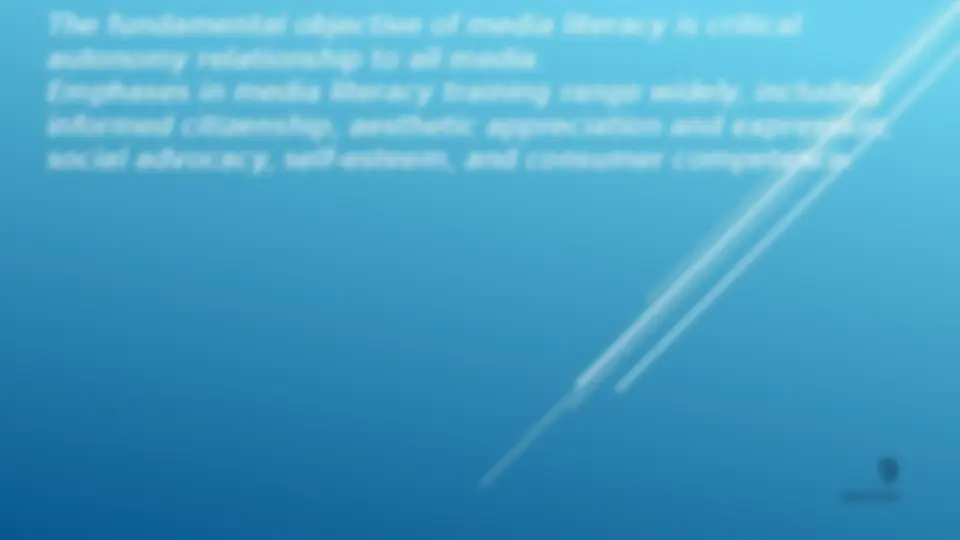
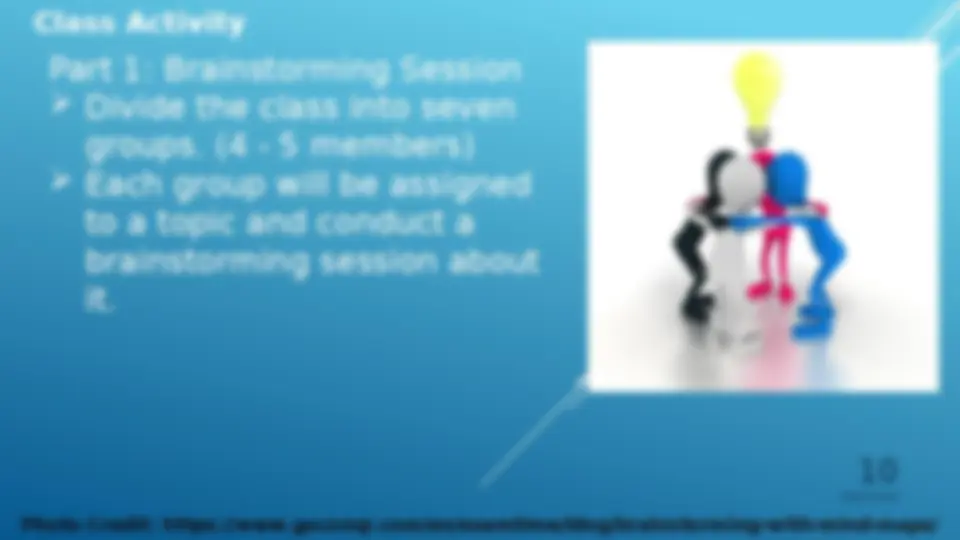
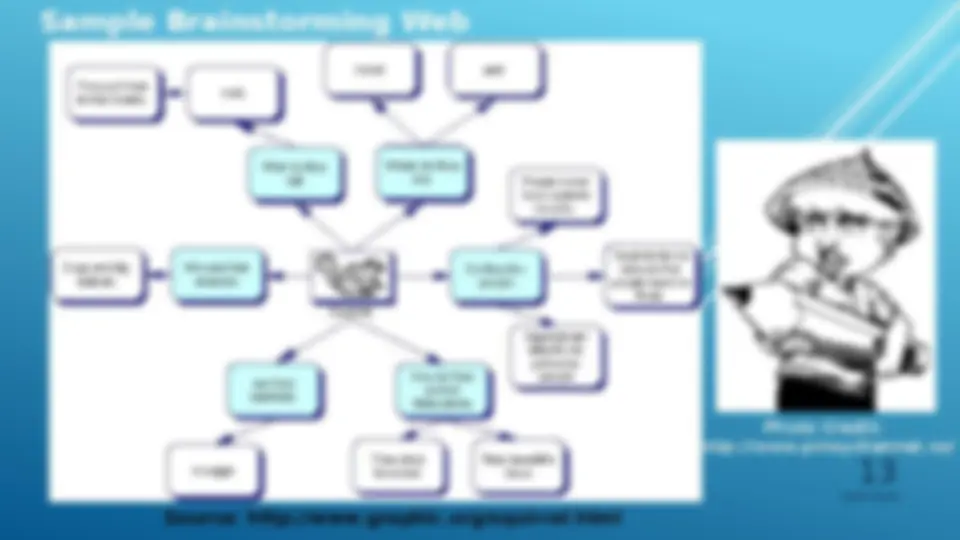
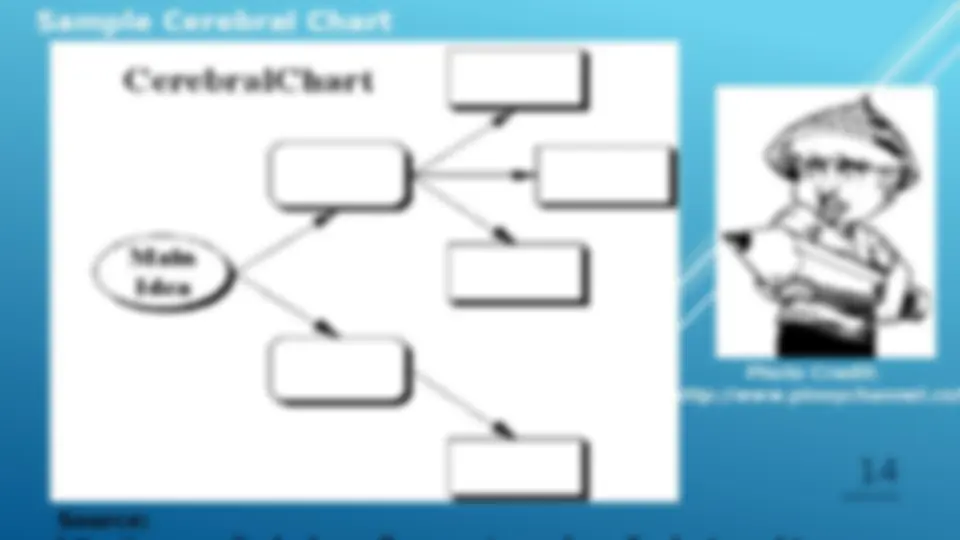
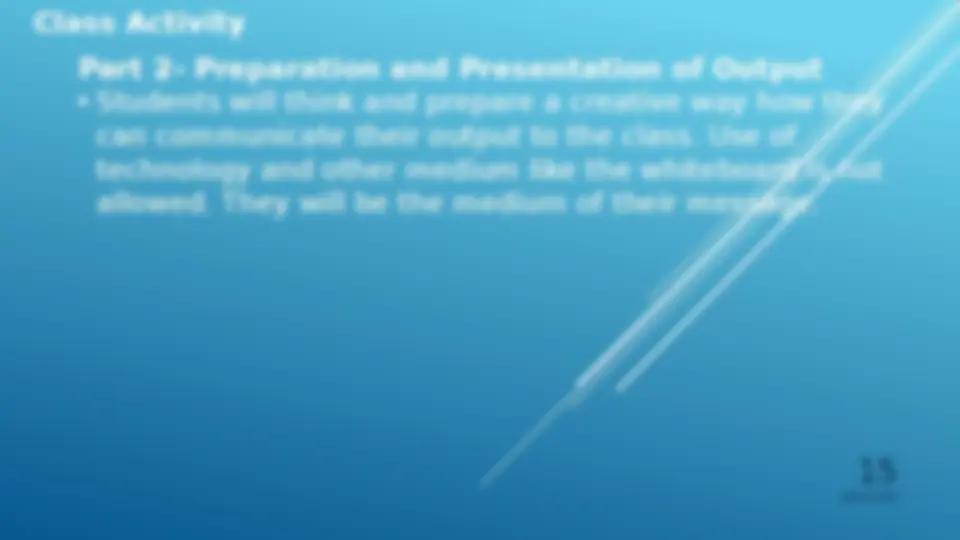


Study with the several resources on Docsity

Earn points by helping other students or get them with a premium plan


Prepare for your exams
Study with the several resources on Docsity

Earn points to download
Earn points by helping other students or get them with a premium plan
Community
Ask the community for help and clear up your study doubts
Discover the best universities in your country according to Docsity users
Free resources
Download our free guides on studying techniques, anxiety management strategies, and thesis advice from Docsity tutors
content includes Media and Information Literacy
Typology: Slides
1 / 15

This page cannot be seen from the preview
Don't miss anything!










03/07/
03/07/
Learning Competencies (^) Identify and discuss the overall impact of media and information to an individual and society as a whole; (^) synthesize the overall implication of media and information to an individual (personal, professional, educational, and others) and the society as a whole (economic, social, political, educational, and others) Performance Standards (^) Synthesize the overall impact of media and information on the individual (personal, professional, educational, and others) and on the society as a whole (economic, social, political, educational, and others).
03/07/
Socialnomics 2017 by Erik Qualman YouTube Channel: equalman Published on Oct 25, 2016 Retrieved February 13, 2017 from https://www.youtube.com/watch?v=PWa8-43kE-Q A video clip about senior citizens who are technology savvy.
03/07/
(^) How did the senior citizens in the video use technology and the Internet in their daily lives? (^) How did the government help the senior citizens become more media and information literate? (^) What makes senior citizens, or people in general, media and information literate? (^) How about your grandparents, or any senior citizens you personally know, and whether they are as “techie” as Lola Techie. Explain how? Answer the following questions:
03/07/
(^) Evaluate the quality of a message based on its content and form. (^) Judge the value of a message based on one’s ethical, religious or democratic principles. (^) Respond orally, in print, or electronically to messages of varying complexity and content. (^) Analyze (^) When people analyze messages, they are able to examine the design of the messages form, structure and sequence. They can make use of artistic, literary, social, political, and economic concepts to understand the context in which the message occurs. For example: (^) Use prior knowledge and experiences to predict outcomes. (^) Interpret a message using concepts such as purpose, audience, point of view, format, genre, character, plot, theme, mood, setting, context. (^) Use strategies including compare/contract, fact/opinion,
03/07/
(^) Produce or create both print and electronic media (^) When people create (or communicate) messages, they are able to write their ideas, using words, sounds, and/or images effectively for a variety of purposes, and they are able to make use of various technologies of communication to create, edit, and disseminate their message. (^) Make use of brainstorming, planning, composing, and revision processes. (^) Use writing and oral language effectively with master of rules of language usage. (^) Create and select images effectively to achieve various goals. (^) Use technologies of communication in the construction of messages.
03/07/
Class Activity
Photo Credit: https://www.goconqr.com/en/examtime/blog/brainstorming-with-mind-maps/
03/07/
Topic and Group Assignment Overall Implication of Media & Information Individu al Societ y Professio nal Personal Education al Economi c Social Political^ Education al Group 1 ●Group 2 ●Group 3^ ●Group 4 ●Group 5 ●Group 2 ●Group 6 ●Group 7
03/07/
Sample Brainstorming Web Source: http://www.graphic.org/squirrel.html Photo Credit: http://www.pinoychannel.co/
03/07/
Source: Photo Credit: http://www.pinoychannel.co/ Sample Cerebral Chart